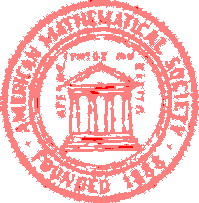Artificial intelligence and machine learning
Research Article
Identifying healthy and diseased areas of plant leaves using neural networks
Alexander Vladimirovich Smirnov1 , Igor Petrovich Tishchenko2
, Igor Petrovich Tishchenko2
| 1,2 | Ailamazyan Program Systems Institute of RAS, Ves'kovo, Russia |
| 1 |
 asmirnov_1991@mail.ru asmirnov_1991@mail.ru |
Abstract. This paper presents a study aimed at developing a neural network method for detecting healthy and diseased areas of plant leaves based on their images and calculating the ratio of their areas. The basic network of the FPN architecture with an encoder in the form of the ResNet-34 architecture was used as a neural network model. To train the ANN, binary masks of target areas of plant leaves were used as labels; they were obtained programmatically without manual marking. Due to this, it was possible to achieve a reasonable compromise between the resources required to create masks and their accuracy. When training the neural network model, the accuracy of 96.5% and 78.9% was achieved according to the F1 metric for determining healthy and diseased areas, respectively. Next, the model was inferred, as a result of which the "health" index was calculated for each of the studied leaf images. In the context of the problems being solved, the "health" index is the difference between the percentages of healthy and diseased areas, which can be used to assess the severity of the disease, as well as to monitor the dynamics of the disease as an indicator of the effectiveness of the drugs or care methods used. The scientific novelty of the presented study lies in the creation of a method for automatically determining the ratio of healthy and diseased leaf areas, which combines modern computer vision technologies, machine learning and practical applicability for agronomy and plant growing. (In Russian).
Keywords: neural network analysis, health index, healthy leaf area, diseased leaf area, model
MSC-2020 68T10; 68T45,68T07
68T10; 68T45,68T07
For citation: Alexander V. Smirnov, Igor P. Tishchenko. Identifying healthy and diseased areas of plant leaves using neural networks. Program Systems: Theory and Applications, 2025, 16:3, pp. 69–97. (In Russ.). https://psta.psiras.ru/2025/3_69-97.
Full text of article (PDF): https://psta.psiras.ru/read/psta2025_3_69-97.pdf.
The article was submitted 30.07.2025; approved after reviewing 07.08.2025; accepted for publication 19.08.2025; published online 25.08.2025.


